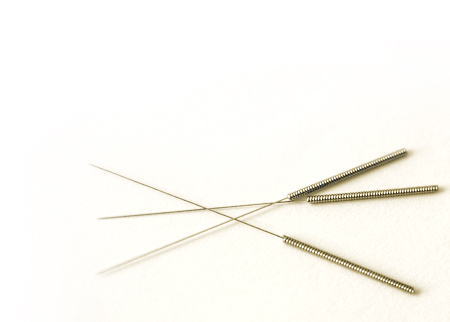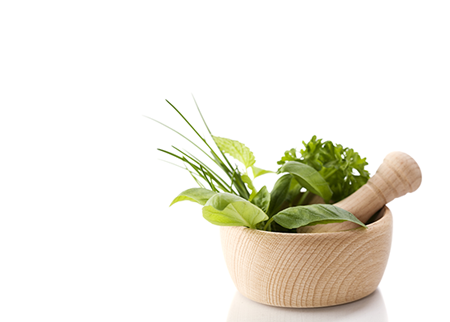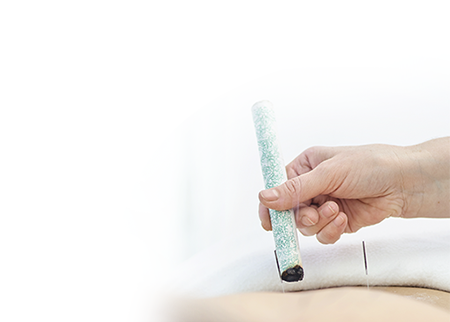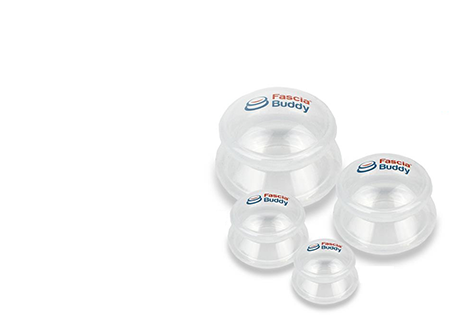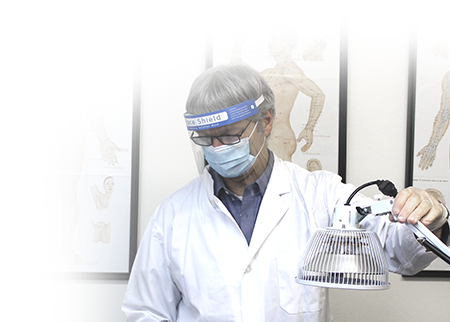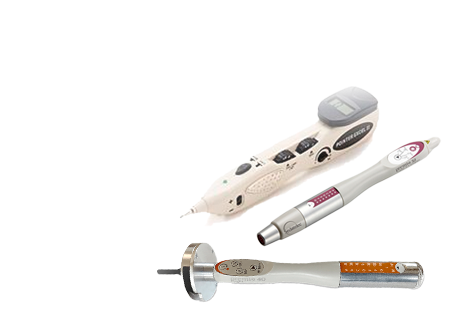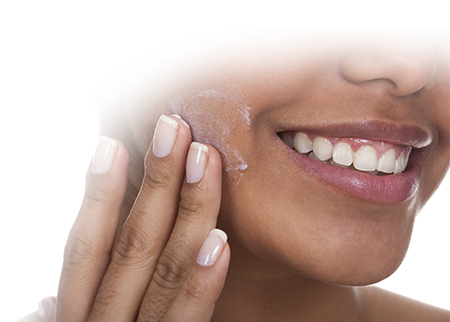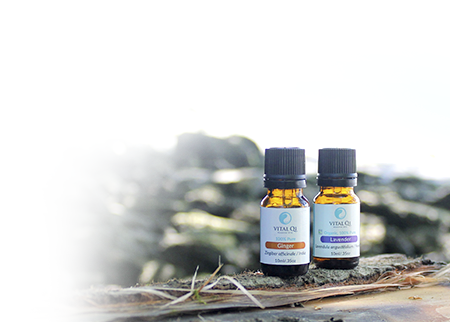
Acupuncture needles are not all alike – check out our tutorial and get informed on needle quality!
Acupuncture involves inserting metals into your patients body. Needle manufacturing and standards vary greatly and correspondingly, so do prices.
Please find below a series of needle articles that details essential information about manufacturing, styles, the de-qi needle sensation and more. We hope that you will find this information helpful when it comes to choosing the best needle suited for your practice.
To get started with our tutorial, click on one of the articles below:
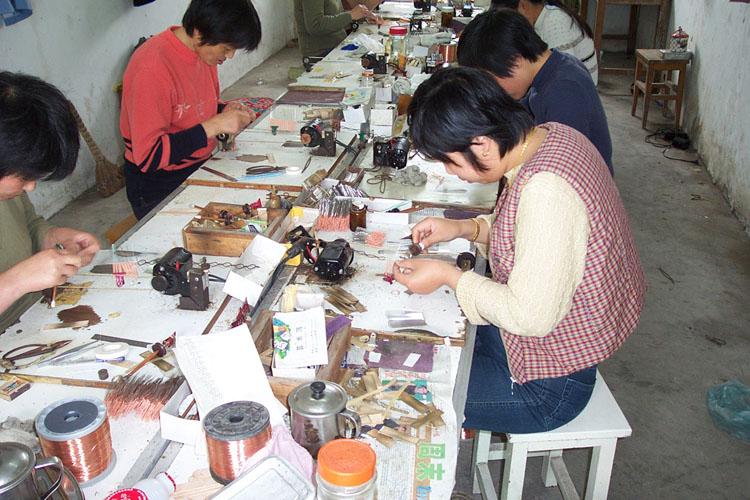
Common knowledge tells us that “you get what you pay for”. In China, while labor is cheap, it is the other aspects of manufacturing that are variable. Those aspects include the type of metal used to make the needle, sharpening methods, the type of Sterile Room the needles are assembled and packaged in, and the quality control standards in place at each level of manufacturing.
Materials:
Stainless steel comes in a variety of grades and it is one of the key cost factors. Different grades of surgical steel have different properties, which may affect the quality of your treatment.
Lubricants may or may not be used. Types and qualities vary and will affect the cost of the needle.
Manufacturing Facilities:
Manufacturing facilities vary greatly. Very low-end needles are outsourced to individuals for sharpening, or to facilities with little or no quality control, and then brought back to the main factory to be packaged and sterilized. Mid-range facilities use better quality control, and a 100K sterile facility for finishing the needle and packaging. A 100K sterile room allows for 100,000 airborne particles per cubic meter. Better yet, some facilities are manufactured in a 10K sterile room.
That means only 10,000 ambient air particles are permitted per cubic meter. The more stringent factories are about cleanliness, the less bacteria ends up on the shaft of the needle. All needles are sterilized, but if they are made in a factory with poor quality control, a quantity of dead bacteria will remain on the shaft of the needle after sterilization. Sensitive patients will react to the proteins on the shaft of the needles from the dead bacteria. This is called the pyrogen effect and in most cases cause redness, and possibly hives and itching. Low-end needles should be avoided no matter how attractive the savings are. We do ourselves and our patients a disservice by inserting low quality metal of uncertain manufacture into our patient’s precious body.
Here at Eastern Currents Distributing, we make every effort to ensure the high quality of all the needles we carry. The needles we carry are made in factories with integrated manufacturing and quality control procedures. Prices between brands may vary because of the raw materials; however, manufacturing is set at a high standard, so you can be confident in the products you purchase.
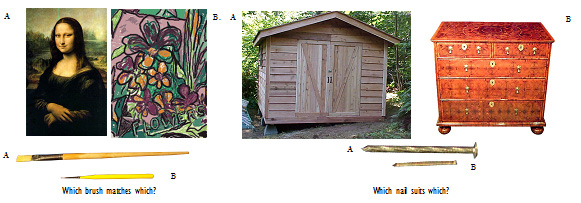
As indicated in the pictures above, it is intuitive that some tools fit with specific jobs.
As a practitioner, you need to assess your style of needling and challenge yourself to adapt your style to each patient that walks in your door.
For example, is your style similar to an artist who likes big strokes with big brushes or a carpenter who works with 2×4’s? Then, as the pictures above show, you would likely use brush A for painting B and nail A for wood project A. But what if you are given picture A to repair, would you still use brush A? We hope not! You would be surprised by how many practitioners do just that with acupuncture needles. They use the same type of needle on every patient that walks into their clinic.
Each type of needle has certain features that you can match to the patient and their situation. In many schools, students will use only one or two styles of needles, but are not taught that certain needles are more beneficial for some patients. At Eastern Currents, we are trying to change that, because by considering the patient’s body type and condition, you can then choose a needle that best matches your patients’ presentation, thereby enhancing your clinical success.
Please read our next article, the Anatomy of a Needle, to learn more about how you can select the most effective Qi-moving tool for each patient’s body type and unique situation.
Basic Components: The basic components of the needle include the following:
- Handle
- Shaft
- Needle tip
- Presence of lubricant or not
- Tube, Plastic retainer, glue spot or friction zone
Handle
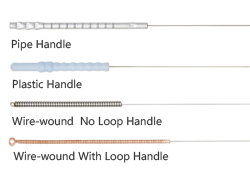
There are many types of handles on the market. Some have been designed purely for their ease of manufacture or to appeal to a certain aesthetic, others for definite clinical or practical value. In the picture below you will see the current styles of needles in the marketplace.
Pipe Handle
Aluminum alloy or stainless steel caps are placed over the shaft of the needle and are crimped in two or three locations to secure the handle to the shaft. The pipe handle is further scored to create better grip for the practitioner when stimulating the needle manually.
Pros: The aluminum alloys are lightweight and highly conductive. You can easily use moxa or electro-stimulation with these needles. The tubes are narrow and allow for precise placement.
Cons: Some pipe handles can be bulky depending on the brand. This can make the needle awkward to using in tight areas like the ear.
Plastic Molded Handles
The plastic-molded handle has become popular over the years, and while it does have some limitations, it is still preferred by a great many practitioners.
Pros: The handles are colour-coded with industry standard colours – this makes the gauge or thickness of the needle easily identifiable. With plastic handles the manufacturers are able to create a very efficient release method for the needles, making them fast and easy to use. Plastic handle needles are often higher quality needles with a micro layer of lubrication that makes insertion almost painless.
Cons: The plastic handle makes using electro-stimulation a touch more complicated. As there is no metal handle to attach your electrode to, one has to clip on to the shaft of the needle which can be, depending on the angle, a bit more challenging. Another con is that you cannot use moxa on the handle.
Wire Wound (with or without loop)
Wire wound handles are by far the most common style of handle. Once the shaft of the needle is sharpened, the handle is created by winding one of a variety of different metals around the needle shaft. The winding can be done by a robotic machine in a completely sealed airtight casing, or it can be done in an open environment by workers using hand-held motorized winding machines. The winding creates a loop at the end, which is either left or cut off depending on the style of needle being created. The benefits, limitations and characteristics are outlined below:
The Pros of a Loop handle: The Loop provides a nice catching point for moxa when using the needle fire technique, or for attaching a clip for electrotherapy.
Cons: Few. The only drawback is with tubed loop-handled needles where the tube must be a bit wider, creating an increased surface area for insertion.
The Pros of a Non-Looped handle: The Non-Looped needle allows for a narrower tube, thus minimizing the surface area for insertion.
Cons: Some practitioners may not like how thin the handle is.
Metals used for wire wound handles:
Copper
Pros: Copper has excellent conductive properties and before the creation of newer, cost-effective metal alloys, it was the metal of choice. The obvious colour aids in needle removal. Thirdly, using two very distinct metals creates a bi-metallic needle. Some practitioners prefer the needle for its electron exchange between the two metals, giving it a subtle but enhanced energetic effect.
Cons: None.
Silver or Gold
Certain specialty acupuncture techniques use silver or gold as a method of reinforcing or sedating an acupuncture point. In this case, the whole handle and shaft of the needle is silver or gold-plated. Silver needles are considered sedating or dispersing needles for use in excess conditions, or pain conditions. Gold needles are for reinforcing or tonifying points when qi or yang is deficient.
Pros: The use of precious metals is more bio-active than stainless steel, resulting in an increased therapeutic action. Using these needles focuses your intent very clearly as to the specific effect of reinforcing or sedating on each point.
Cons: The precious metals can tarnish over time and as a result do not appear to be clean. Their sterility however is still guaranteed until the expiry date.
Aluminum Alloys or Chrome Handles
Newer aluminum alloys and chrome wire round handles are an increasingly used option.
Pros: Lightweight, highly conductive and tarnish resistant.
Shaft
The shaft of an acupuncture needle is made from surgical stainless steel wire of different gauges (thicknesses). Stainless steel comes in a variety of grades:
- Inexpensive Chinese surgical steel is higher in nickel than other surgical steels. The steel is forged in an open vat and oxidizes when it hits the air, resulting in a metallurgical impurity. This can affect the smoothness and flexibility of the final needle.
- Moderately priced and higher-end needles are made from vacuum-forged surgical steel which never oxidizes. These higher end metals have a lower nickel content, which is best for patients with metal allergies, as nickel is usually at the top of the list of allergens.
Needle Tip
The vast majority of needles are hand sharpened and as a result consistency from needle tip to needle tip will vary. Higher end needles are machine ground which makes for uniform consistency. Much research has gone into needle tip geometry. Certain angles and types of edges can separate tissue differently and require less insertion force. Each brand of needle has developed its own style, from angled to a variety of beveled tips. See each brand for details.
Lubricant
Some needles are coated with a lubricant, which is usually a type of bio-inert material such as silicone. There are two thousand types of FDA approved silicones. Lower-end lubricants may not adhere to the needle body completely. Methods of coating vary, and less costly methods may leave small microscopic droplets at the end of or along the shaft of the needle. The coating methods and adhesive quality of the lubricants are important considerations for practitioners to be aware of. Lubricated needles are an important part of a clinicians’ practice, so the materials used and the methods of application should be of the highest standards. Note: most lubricants can withstand the heat of indirect moxa. It is not recommended, however, to use direct flame or moxa on the needle itself.
Tube, plastic retainer, glue spot or friction zone
The use of tubes has grown in popularity over the years as they allow for a quick and easy method of inserting the needle comfortably below the surface of the skin. Tubes will vary in diameter depending on the style of needle handle and method of retaining the needle in the tube. Economy needles will use a colour-coded plastic retainer to compress the handle of the needle against the inside wall of the tube. When these are removed the needle drops down to the surface of the skin and is ready to be inserted.
Higher end needles use a glue spot between the inside of the tube and the handle of the needle. To release, one uses a mild lateral pressure towards the opposite side which breaks the bond and releases the needle to be inserted. The last retaining method involves a zone of friction created at the top of the tube between the tube and handle. These types of needles are most convenient as they are a one step method of just pressing or tapping the needle. Different manufacturers use different methods and some work extremely well, while others fall out too easily and are not reliable.
The “Qi” sensation is a widely discussed phenomenon in acupuncture. All needles produce a needle sensation when inserted, and there are a number of factors that are at play each time a needle is inserted. They are as follows:
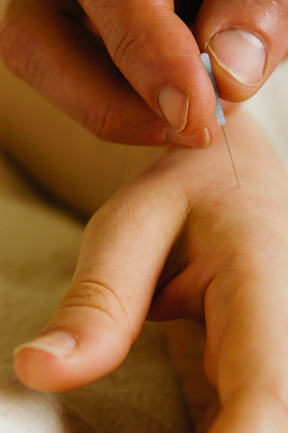
-
- In general the quality of the needle will determine the nature of the insertion sensation felt by the patient. Lower-end, or poor quality needles will create more discomfort as the needle tips are not consistent, may be dull, blunt or broken. Higher-end needles have better needle tip geometry and will generate less or no sensation when inserted.
- It must be noted that all needles – regardless of the quality – can cause an intense pain when inserted. This will occur with 5% of needle insertions and results when a nerve ending or blood vessel is nicked during insertion. When this occurs the sensation can be described as a “biting or burning” sensation and is significantly different than the sensations produced by other needle insertions. If you warn your patient about this infrequent phenomenon, they will be able to help you determine if the needle needs to be reinserted to relieve the discomfort. If you do not warn your patient about this occasional intense sensation, they may try to just bear it and consider acupuncture to be a painful experience.
- The “False Qi” sensation and working with thinner gauged or lubricated needles.
Points To Consider
Thicker gauge needles or non-lubricated needles are prone to giving the practitioner the impression that they have “de qi”. The “de qi” sensation is characterized by a grabbing or pulling sensation felt by both the patient and practitioner. Often, with thicker or poor quality needles, the grabbing of tissue is felt by the patient who responds by informing the practitioner who then assumes the “de qi” is obtained and stops the stimulation.
For more exacting practitioners, this is where working with good quality needles or lubricated needles becomes very important. With thinner, or higher-end needles you are able to insert and penetrate to the depth of tissue desired without causing discomfort. Then stimulation to reinforce or disperse can begin. Now the “Qi Sensation” takes on a different quality that is a deeper pulling, heaviness or tingling, as opposed to the discomfort associated with the “False Qi Sensations”.
With finer or lubricated needles, one has to be exacting on point location as, if one is slightly off, there will be no “Qi Sensation” when reinforcing or dispersing the point. It will feel like nothing to the patient and the practitioner will feel like she/he is twirling the needle in air. At that point it is advised to withdraw the needle slightly and probe on angles to get the qi; or simply remove the needle, discard, recheck the location and insert a new needle into the point and stimulate.
In general it is useful for practitioners to have the following selection of needles available to them in the clinic:
- A hypo-allergenic brand
- A higher-end lubricated brand
(A higher end needle will in general offer the patient the most comfortable experience. A more comfortable clinic experience translates into more frequent visits for general wellness. If on the other hand, expense is a concern, you should stock the above to use on an as-needed basis and then use a mid-grade needle for your general acupuncture needs.)
It is important to choose the brand that best suits your patient’s needs. Consider their situation and then match the type of needle to the presentation. If the patient has a very tight muscle or is very nervous, a standard needle would be too painful to insert and so a lubricated needle should be used. If the patient has allergic tendencies, then a hypoallergenic needle would the best option.
Having a well-stocked clinic allows you to easily customize your treatments for the best outcome. Successful treatments = happy patients = a successful practice.


